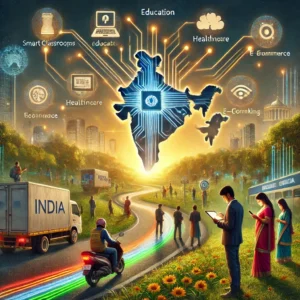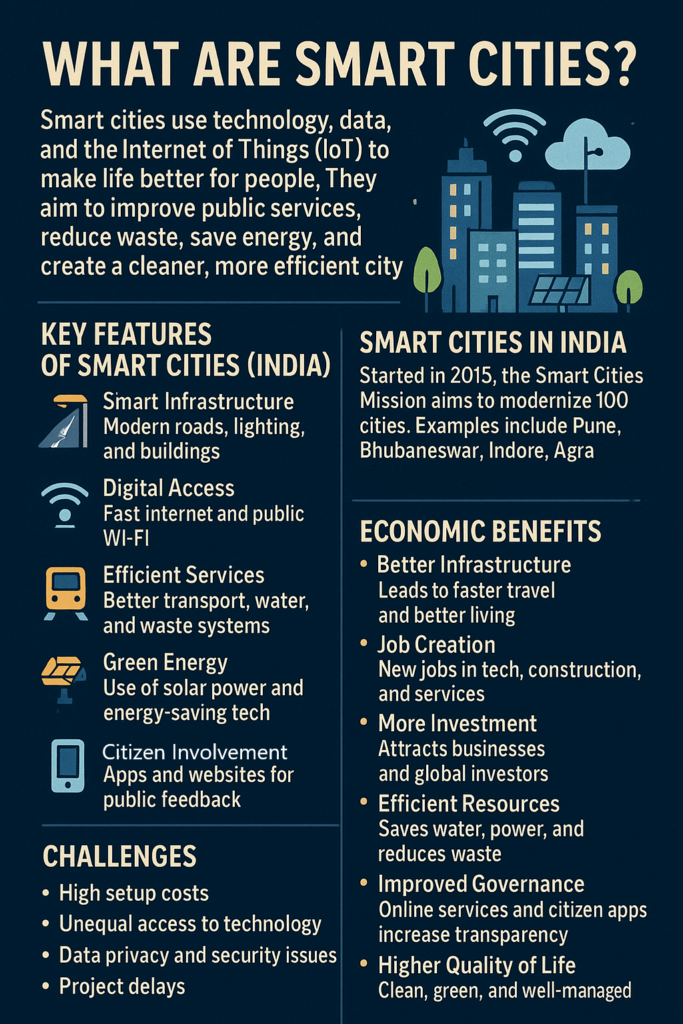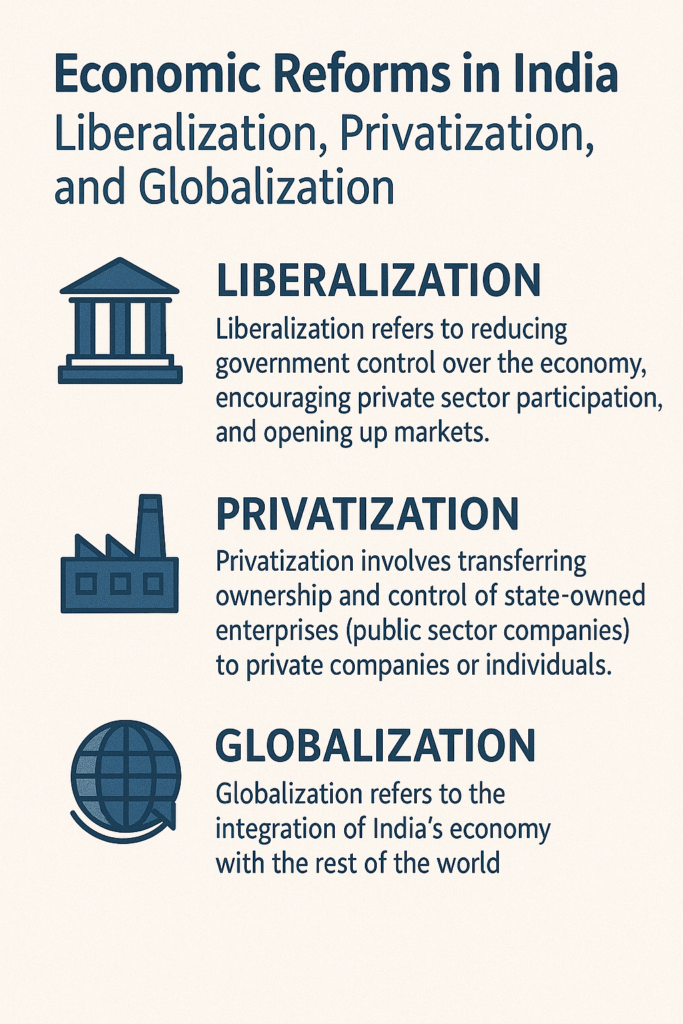What is Digital Infrastructure?
Digital infrastructure refers to the systems and technologies that allow people and businesses to connect, communicate, and access information online. It includes things like:
- Internet networks
- Data centers
- Cloud services
- Broadband connectivity
- Mobile networks (like 4G and 5G)
- Digital payment systems

Why is Digital Infrastructure Important for India’s Economy?
India is one of the fastest-growing economies in the world, and digital infrastructure plays a key role in this growth. Let’s explore its importance:
1. Boosting Economic Growth
Digital infrastructure is essential for economic growth because it connects people, businesses, and markets in new ways. Here’s how:
- Improved Productivity: With better internet connectivity and digital tools, businesses can work more efficiently, share information faster, and make smarter decisions. This leads to increased productivity in almost every sector, from agriculture to services.
- Innovation: Access to digital technologies encourages innovation. Startups and companies can use the internet, software, and digital platforms to create new products, services, and business models, which can help drive economic development.
- Job Creation: The growth of digital infrastructure opens up new industries, such as e-commerce, digital marketing, and tech development. This creates job opportunities for millions of people, especially in urban and rural areas.
2. Enabling Financial Inclusion
Digital infrastructure helps to bring more people into the formal economy. In India, many people previously lacked access to banking and financial services, especially in rural areas. But with the rise of digital technology, there has been a huge push for financial inclusion.
- Mobile Banking: With mobile phones, people can now access banking services through apps like Paytm, PhonePe, or Google Pay. They can transfer money, pay bills, and even get loans without visiting a bank.
- Digital Payments: The introduction of UPI (Unified Payments Interface) made it easy for anyone to make quick and secure payments using their smartphones. This has reduced the need for cash, making transactions smoother, faster, and safer.
- Direct Benefit Transfers (DBT): The government uses digital platforms to send money directly to people’s bank accounts. This helps ensure that subsidies, pensions, and welfare benefits reach the right people without any delays.
3. Enhancing Education and Skill Development
Digital infrastructure also helps improve education and skill development in India:
- Online Education: With the rise of internet connectivity, students in remote areas can access educational resources, online courses, and even attend virtual classes. This has made education more accessible, especially in times of crisis like the COVID-19 pandemic.
- Skill Development: Digital platforms also offer opportunities for people to learn new skills through online tutorials, courses, and training programs. This helps individuals improve their employability and contributes to a more skilled workforce.
4. Improving Healthcare Access
Digital infrastructure plays a crucial role in improving healthcare services:
- Telemedicine: With internet access, people in rural areas can consult doctors online and get advice without traveling long distances. Telemedicine has become especially important in areas where there is a shortage of healthcare professionals.
- Health Records: Digital infrastructure allows healthcare providers to store and manage patient records electronically, which helps improve the efficiency and quality of care.
- Government Health Schemes: The government can use digital platforms to manage and implement health initiatives, like Ayushman Bharat, which aims to provide free healthcare to millions of people.
5. Empowering Small Businesses and Entrepreneurs
Digital infrastructure is also a game-changer for small businesses and entrepreneurs in India:
- E-commerce: With better internet connectivity, small businesses can now sell their products online through platforms like Amazon, Flipkart, and Shopify. This opens up new markets and helps them reach customers across the country and even globally.
- Digital Marketing: Small businesses can use social media platforms (like Facebook, Instagram, and YouTube) to promote their products at a lower cost than traditional advertising methods. This helps them grow their customer base and increase sales.
- Access to Financing: Digital platforms also make it easier for small businesses to access loans and credit from digital lending platforms like Paytm and Razorpay, which would otherwise be difficult for them to access.
6. Enhancing Government Services and Transparency
Digital infrastructure also helps improve the efficiency and transparency of government services:
- E-Governance: The government has moved many services online, allowing citizens to access services like passport applications, income tax filing, land records, and welfare schemes digitally. This reduces bureaucracy and makes the government more accountable to the people.
- Transparency: With digital platforms, the government can track how public money is being spent, which helps reduce corruption and improve accountability.
7. Supporting Agriculture
In rural India, where agriculture is the main source of livelihood, digital infrastructure helps farmers improve their productivity:
- Weather Forecasting: With internet access, farmers can get real-time weather updates, market prices, and information on crops, helping them make better decisions and avoid losses.
- E-Platforms for Farming: Farmers can access e-commerce platforms to sell their products directly to consumers or connect with suppliers and buyers through digital marketplaces.
8. Facilitating Smart Cities and Urban Development
With digital infrastructure, cities can become smarter and more efficient:
- Smart Transportation: Digital tools help cities manage traffic, public transportation, and parking better, reducing congestion and improving the overall experience for residents.
- Energy Management: Smart grids and digital energy systems allow cities to optimize energy usage and reduce wastage, making urban living more sustainable.
Challenges in Digital Infrastructure
While digital infrastructure offers many benefits, there are still some challenges:
- Digital Divide: Not everyone in India has equal access to the internet, especially in rural areas. The government needs to work on improving internet connectivity in underserved regions.
- Cybersecurity: With the increase in digital transactions and data storage, there are concerns about cybersecurity and protecting personal and financial information.
- Digital Literacy: Many people, especially in rural areas, may not know how to use digital tools. Promoting digital literacy is essential to ensure everyone can benefit from digital infrastructure.
Conclusion
Digital infrastructure plays a vital role in boosting India’s economy. It drives economic growth, supports financial inclusion, empowers businesses, improves education, enhances healthcare, and transforms government services. As India continues to improve and expand its digital infrastructure, it will unlock even more opportunities for growth and development.











